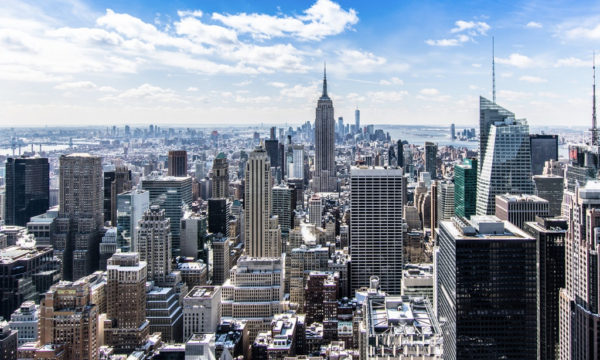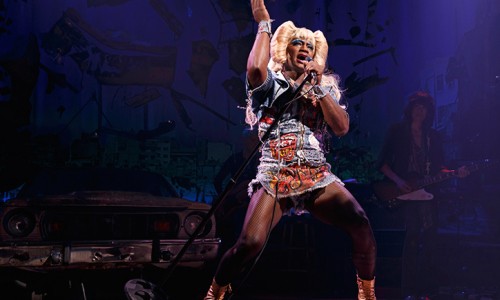Mayor Bloomberg’s boom mirage fades with the Hudson river contamination

Mayor Bloomberg would have the rest of the world thinking, with its current influx of residents, that NYC is panacea in an otherwise crumbling environment.
Actual national unemployment numbers are punishing. The number of people riddled with mortgage, medical and education debt in the U.S. is massive. Infrastructure is crumbling and corruption at every level of society is rampant. Is New York City really untouched by all this?
“For the first time since before 1950, more people are coming to New York City than leaving,” said Mayor Bloomberg, in the Blue Room on NYC.gov. “We have many indicators of quality of life in the city – record low crime, record high tourism, record high life expectancy, record high graduation rates, record job growth and more – but there’s no better indication of the strength of our city than a record high population and a net population influx.”
As per Alex Fitzpatrick, reporting in 2012 on Mashable.com “NYC has become a paradise for Tech start-ups.” One reason he explains is NYC’s density and the quality of its transportations systems making it easier for entrepreneurs to get from meeting to meeting.
NY Business Journal said in September 2012 that the net population growth of NYC beat out Philadelphia, Salt Lake City, and Washington D.C.
Is all this good news? As a native New Yorker and current resident I don’t see the problems of the city being amended as fast as the population is growing and the incredible art and food available here is no consolation. The subways are more crowded than ever and run more sporadically, the apartments are more expensive, as is most of everything else, the garbage and waste are more prolific as is the traffic and pollution. One of my clients, another native New Yorker and a parent, recently expressed her concerns to me about the growing population, stating: “It is already incredibly difficult to get your child into school but with more parents and children arriving and more schools shutting, how will all the children be educated?”
And if we dare to peek below the surface of good tourism, from high life expectancy and graduation rates (all of which will certainly be affected in the negative by a barrage of new people coming in), to the more systemic problems of cities in general, we will see more cause for concern than celebration.
Wikipedia states that there is no agreement on how a city is distinguished from a town within the English language. But Derrick Jensen, philosopher and award winning author of End Game and more than a dozen other books criticizing civilization, describes cities as distinguished between camps, villages and so on, as people living more or less permanently in one place in densities high enough to require the (often forced) importation of food and other necessities of life. According to Jensen “the story of civilization is the story of the rise of city-states, which means it is the story of an increasing region of unsustainability surrounded by an increasingly exploited countryside”. In other words, NYC can only exist because it draws down the surrounding countryside. This will continue to be a bigger and bigger problem as it is throughout the world. We can see this very apparently in the rise of the problems New York City has with the State of New York (upstate) which provides us with clean water (because our own source of water in the Hudson River is already completely contaminated). Writing in The Daily Freeman of the Hudson Valley (where NYC draws its water from) in May 2012, William Kemble wrote about the struggle between the city and state over Ashokan Reservoir in Ulster County and the Kensico Reservoir in Westchester county because of the pollution in the Kensico. Kemble said: “A tentative agreement, drafted by the Department of Environmental Conservation also called for the city to pay a $1.55 million fine for unauthorized chemical treatment of the Kensico (read :pollution).”
Another and related issue giving voice to the issue of cities drawing down the surrounding areas is Hydrofracking. Jillian Rayfield on tpmmuckraker.com in December 2011 reports: “Gov. Andrew Cuomo (D) had hoped that in the coming year the state would lift a moratorium on drilling in the Marcellus Shale in western New York. The shale, which also extends into parts of Pennsylvania, West Virginia and Ohio, is considered a prime source for extracting natural gas through a process called hydraulic fracturing, or fracking. This involves horizontally drilling into the shale rock and flooding it with chemicals to crack it open, allowing the gas to escape.” NYSDEC study that estimates fracking would directly create 25,000 jobs in New York.
A major concern is that the process could potentially contaminate the state’s water supply since the shale is so close to the main water source for much of the state — including New York City. In some fracking site-adjacent towns, homeowners have reported that their tap water has turned brown or become highly flammable.”
NYC hardly seems like a panacea but is more like any other area where power is concentrated into the hands of a few that want, and will take, the necessities of life from others and the surrounding area. This will create jobs, which will create an influx of people in an economic system that leaves them no alternative. This in turn will create a need for more necessities, more draw down and contamination.
Welcome to industrial civilization. This is how it functions and it is a dead end course. Mayor Bloomberg can tout quality of life issues all he wants but the truth is closer to the horribly contaminated and abused Hudson River.
Jennifer Bilek























Facebook
Twitter
Instagram
YouTube
RSS